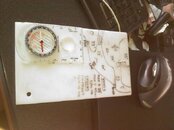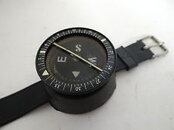bc214
Contributor
Hey guys.
I have been working on my navigation as part of my AOW series (SSI), and have run into some trouble. I purchased a slate/compass combo from trident through my LDS and have become frustrated with it.
On various local limited vis dives I have used it without much difficulty, but also without much expectation of accuracy. Generally, get out to the channel, cruise in one direction for 20 mins, reverse.
In my quarry dives for nav the other day, I could not maintain a heading very well and got very frustrated. It seemed like my compass was forcing me off course even though the heading remained true in the device. Surface later to find I did in fact "pull" sometimes by 10-15 degrees.
I was especially frustrated because I am pretty decent with land nav and moderately handy with a compass.
So today I go outside with my compass and shoot an azimuth and then obstruct my forward view. Following only the compass and IM OFF AGAIN!!! I went back inside and grabbed my lensatic and do the same thing. Spot on with the land compass. Repeat this cycle a few times and I am satisfied that it is either my compass or something that I'm clearly ping wrong with my dive compass.
Inside I inspect the dive compass. I found that, and before I say this I know already that it must be level, that a change of the compass in any direction scrambles the card to the point of being off by up to 15 degrees. Tip it just the tiniest bit forward and north slowly rotates away by an unacceptable amount. Also, the card is slow to respond, which gives me a great chance to mess things up.
I went down to my LDS and looked at some other devices and wasn't super satisfied with any.
Again, I know that the compass must be level, but are there models on the market that are more "forgiving" than this thing?
I have my AOW ocean dives up in RI coming up in a couple weeks, and I would like to try to replace this thing with something a little better and get some practice in first.
Here is a picture of the compass I have, and I'd really love some advice and or recommendations on a fast, forgiving compass.
Thanks,
BC

Sent from my iPhone using Tapatalk
I have been working on my navigation as part of my AOW series (SSI), and have run into some trouble. I purchased a slate/compass combo from trident through my LDS and have become frustrated with it.
On various local limited vis dives I have used it without much difficulty, but also without much expectation of accuracy. Generally, get out to the channel, cruise in one direction for 20 mins, reverse.
In my quarry dives for nav the other day, I could not maintain a heading very well and got very frustrated. It seemed like my compass was forcing me off course even though the heading remained true in the device. Surface later to find I did in fact "pull" sometimes by 10-15 degrees.
I was especially frustrated because I am pretty decent with land nav and moderately handy with a compass.
So today I go outside with my compass and shoot an azimuth and then obstruct my forward view. Following only the compass and IM OFF AGAIN!!! I went back inside and grabbed my lensatic and do the same thing. Spot on with the land compass. Repeat this cycle a few times and I am satisfied that it is either my compass or something that I'm clearly ping wrong with my dive compass.
Inside I inspect the dive compass. I found that, and before I say this I know already that it must be level, that a change of the compass in any direction scrambles the card to the point of being off by up to 15 degrees. Tip it just the tiniest bit forward and north slowly rotates away by an unacceptable amount. Also, the card is slow to respond, which gives me a great chance to mess things up.
I went down to my LDS and looked at some other devices and wasn't super satisfied with any.
Again, I know that the compass must be level, but are there models on the market that are more "forgiving" than this thing?
I have my AOW ocean dives up in RI coming up in a couple weeks, and I would like to try to replace this thing with something a little better and get some practice in first.
Here is a picture of the compass I have, and I'd really love some advice and or recommendations on a fast, forgiving compass.
Thanks,
BC

Sent from my iPhone using Tapatalk






